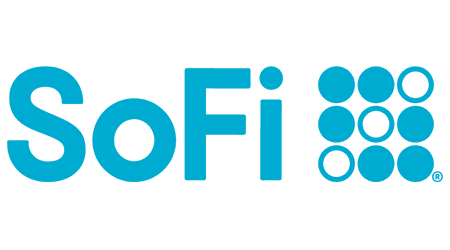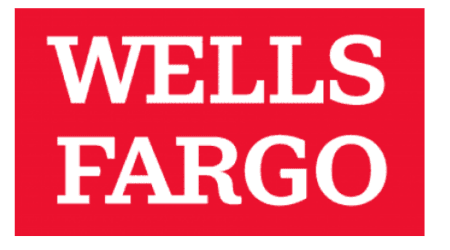Online banks tend to offer banking services with few fees and high APYs, while traditional banks are known for branch access and their vast products — and this matchup demonstrates that perfectly. SoFi is an exclusively online bank with few fees, high savings rates and wealth management tools. Wells Fargo has dozens of accounts and services, but its APYs are historically low, and its accounts aren’t free. Overall, SoFi is the better pick — unless you want to pay monthly maintenance fees and prefer in-person customer support.
SoFi vs. Wells Fargo: A quick comparison
 |  | |
| Bonus |
|
|
| Savings | Up to 3.80% APY on SoFi savings balance by meeting deposit requirements | 0.01% to 2.51% APY, depending on balance, account, zip code and if you qualify for relationship rates |
| Checking |
|
|
| CDs | N/A |
|
| ATMs |
|
|
| Branches | Online only | Nearly 7,000 branches nationwide |
SoFi vs. Wells Fargo: Product offerings
SoFi is an insured online bank with one personal bank account, a full suite of lending options, online investing and a mobile app. It uses the large Allpoint ATM network, with over 55,000 ATMs nationwide, and while it’s an online bank, it does accept cash deposits at Green Dot locations for a $4.95 fee.
Wells Fargo is one of the Big Four banks, holding over $1.7 trillion in assets, thousands of branch locations and a mid-size network of 12,000 ATMs. It has multiple personal and business deposit accounts, a handful of standard and special CDs and wealth management services. Its lending options are vast, too, offering personal loans, small business financing, credit cards and auto loans through its dealer network.
Banking
If you don’t like fees on your checking or savings, SoFi is the winner.
SoFi offers a hybrid bank account called SoFi Checking and Savings. It functions as a checking and savings account combo. There’s no opening deposit requirement or monthly or overdraft fees, and you earn interest on your checking and savings balance. Earn up to 3.80% APY on your savings with direct deposit or by depositing at least $5,000 per month, and earn 0.5% APY on your checking with no requirements at all. There are also points and cashback rewards offered.
Wells Fargo offers four checking accounts: Clear Access Banking for teens and students, Everyday Checking, Prime Checking and Premier Checking. Monthly fees range from $5 to $35, and each account offers at least one way to waive its monthly fee. The Prime and Premier accounts are interest-bearing, but the APY is only 0.01% — a rate that’s much lower than SoFi’s 0.5% APY on checking.
Wells Fargo has multiple savings options, including regular accounts and CDs. Historically, the bank’s APYs are on the lower side. One of its most popular savings accounts, Way2Save, has a low 0.01% APY, and Platinum Savings has tiered APYs offering up to 0.26% to 2.48% APY based on your balance, relationship status and location. You can earn up to 5.01% APY on select CDs with relationship rates, but you’ll need to deposit at least $2,500.
Borrowing
Wells Fargo and SoFi both offer personal loans for a variety of purposes, including home improvement, debt consolidation and more. Each also offers mortgages, and SoFi directly offers auto financing, while Wells Fargo offers car loans through its dealership network. SoFi also offers student loans and refinancing, while Wells Fargo dropped that product in 2020.
SoFi offers a single credit card with 2% to 3% cashback rewards and no annual fee, and Wells Fargo has multiple credit cards to choose from. A few standout cards include the Autograph Journey Cards designed for travel, the Active Cash Card with unlimited 2% cash back and the Bilt Mastercard, which earns cash back on rent payments.
Investing
SoFi offers retirement planning with traditional, Roth, rollover and SEP IRAs. SoFi’s IRAs have no monthly fees, commission fees or minimum contributions. SoFi also offers an online investing platform, called SoFi Invest. Trade stocks and exchange-traded funds (ETFs), talk to financial planners for free, use auto-investing based on your chosen risk tolerance and invest in alternative investments like commodities.
Like most big banks, Wells Fargo also offers retirement planning and wealth management services. In addition to offering IRAs, it has full-service brokerage client service centers, WellsTrade Brokerage accounts, consultations, retirement calculators and much more.
Apps, features and more
SoFi’s mobile app is fully loaded, and you can manage all your SoFi accounts, loans and investments there. One of SoFi’s standout features is the ability to create up to 20 savings “vaults,” which are subaccounts of your savings. For example, you can select Create Vault, then select Emergency Fund and customize its savings goals.
SoFi even lets you input your living expenses to help you determine how large your emergency fund should be. And like most mobile banking apps, you can manage your investments, set up recurring transfers, apply for loans, manage cashback rewards, set up debit card round-ups and much more. SoFi also offers 24/7 customer support over the phone.
Wells Fargo’s website can only be described as outdated. Navigation is tough, and the account listings are a little difficult to decipher. The APYs and offerings also vary based on your zip code. The mobile app is probably a better bet for account management, and it gets mostly positive ratings. Like most typical banking apps, you can transfer money, use Zelle, pay bills and do mobile check deposits. Wells Fargo also offers 24/7 customer service over the phone, just like SoFi, and through an in-app virtual assistant called Fargo.
How SoFi’s and Wells Fargo’s fees compare
SoFi is the clear winner in fees. SoFi’s account doesn’t charge any monthly maintenance, overdraft or out-of-network ATM fees.
Wells Fargo has monthly fees on its checking and savings accounts and a $25 opening deposit requirement. You’ll also see a $2.50 fee if you do a withdrawal, balance inquiry or funds transfer with an out-of-network ATM. While Wells Fargo offers a way to waive those out-of-network fees, you’re required to have the Prime or Premier account.
What customers say about SoFi and Wells Fargo
SoFi has the highest Better Business Bureau (BBB) rating of A+, while Wells Fargo has a dismal F rating, so it’s safe to say that Wells Fargo loses to SoFi here. These BBB ratings are based on the volume of complaints and a company’s handling of them, and Wells Fargo’s reputation isn’t exactly squeaky clean.
In the last few years, Wells Fargo was forced to pay over $3.7 billion in civil penalties and damages to its customers. One of the major issues was Wells Fargo’s failure to create an effective home lending loss mitigation program. About a year later, more penalties came from widespread mismanagement of loans and bank accounts. The bank was wrongfully charging overdraft fees, freezing millions of accounts due to faulty automated filters and wrongfully repossessing vehicles and homes due to misapplying loan payments. The Consumer Finance Protection Bureau reported that over 16 million consumer accounts were impacted.
In stark contrast, SoFi has a great reputation. On Trustpilot and Reddit, SoFi customers praise the accessible hybrid account, savings features, easy loan applications, high APYs and competitive rates on its personal loans. Many also call out a responsive and helpful customer support team.
Final verdict: Which one’s better?
SoFi is the better option. Wells Fargo’s checking accounts all charge monthly fees, and to get out of those, you have to try to waive them. SoFi doesn’t make you go through hoops to waive monthly maintenance fees because it doesn’t have any to begin with. In addition, the hybrid account earns interest on checking and savings, and you can use envelope budgeting and savings round-ups, enjoy up to $2 million in FDIC insurance and so much more. SoFi also has a significantly larger ATM network of 55,000 compared to Wells Fargo’s 12,000 ATMs.
Wells Fargo’s main upside over SoFi is its variety of credit cards and CDs. Other than that, SoFi offers the same services as Wells Fargo, including personal loans, investing, retirement planning and even mortgages. And while Wells Fargo offers CDs, you’ll need a hefty opening deposit of at least $2,500, and it doesn’t offer a lot of terms. On top of that, Wells Fargo has had very recent troubles with regulators.
SoFi at a glance
SoFi’s hybrid account has no fees and all the typical banking products you’d expect from a traditional bank.
- No monthly fees
- Better APYs than Wells Fargo
- ATM network of 55,000+
- A+ with BBB and good reviews
- No physical branches
- Doesn’t accept international wires
- No CDs
- Deposit requirements for best savings APY
Wells Fargo at a glance
Wells Fargo has more credit card offerings, but its recent troubles with regulators and widespread mismanagement of accounts hasn’t helped its reputation.
- Many credit card offerings
- Variety of checking and savings accounts
- Branch access in 36 states
- Recent issues with regulators
- Monthly fees on bank accounts
- APYs on the low side
- Small ATM network of 12,000
Alternatives to SoFi and Wells Fargo
SoFi is a very popular online bank, but if it’s not the right option for you, there are many other online banks to consider. And if you prefer traditional banks with branch access, Wells Fargo isn’t the only bank out there.
- Varo. Like SoFi, Varo is an online-only bank. It features a cashback rewards program on its checking account: up to 6% cash back to earn up to $50 per month. The account also has no monthly fees, and you can earn up to 5% APY on your savings with no balance or deposit requirements.
- PNC Bank. A brick-and-mortar bank like Wells Fargo, PNC offers a variety of hybrid checking accounts in its Virtual Wallet, which functions similarly to SoFi’s account. PNC has a large branch network in the US if in-person customer support is important.
- Raisin. An online savings account marketplace, Raisin offers exclusive savings accounts such as the Customers Bank High Yield Savings account with a 4.01% APY. Unlike SoFi, you don’t have to meet deposit requirements to earn its best savings rate.
See how even more bank accounts stack up:
Ask a question
More guides on Finder
-
Capital One Checking and Savings Bonuses of June 2025
See how to earn up to $1,500 when you open a new Capital One savings or checking account with qualifying deposits.
-
Axos Bank Bonus Offers in June 2025
The $500 Axos Bank bonus is now expired, but you can still earn $50 per qualifying referral, plus up to $400 with a new business account.
-
Discover® Savings Bonus Offers in June 2025
Discover only offers a bonus on its savings account, and it has a high deposit requirement. See how to get it here.
-
Upgrade Promotions and Bonus Offers of June 2025
Earn a checking account bonus of $200 by getting the Upgrade Card and making 3 qualifying transactions.
-
Fifth Third Bank promotions and bonus offers of June 2025
Fifth Third Bank currently offers a $325 checking account bonus when you open a new account and set up qualifying direct deposits.
-
Varo promotions and bonus offers of June 2025
Earn $25 with Varo by referring a friend. See the fine print on how to earn this bonus here.
-
SoFi Bonus Offers for June 2025
SoFi offers several bonus offers, including a direct deposit bonus, welcome offers and referral bonuses. See how to snag up to $300.
-
Personal Savings Rate: How Much is the Average American Banking?
Data on the personal saving rate in the US.
-
Banks That Pay Two Days Early
See a list of some of the top banks and fintechs that offer early direct deposit, including SoFi, Varo, Wealthfront, Discover, Ally, Capital One and more.
-
17 Best Bank Account Bonus Offers for June 2025
Instant sign-up bonuses with no deposit are not typically offered. However, these bank account bonuses have easy requirements.

